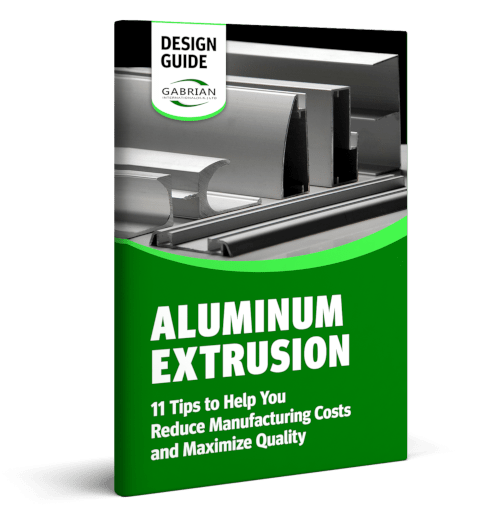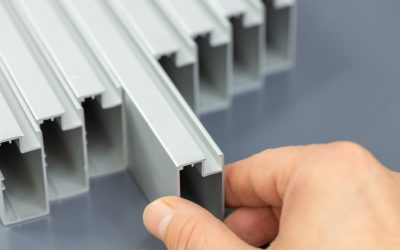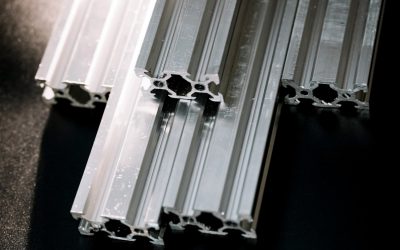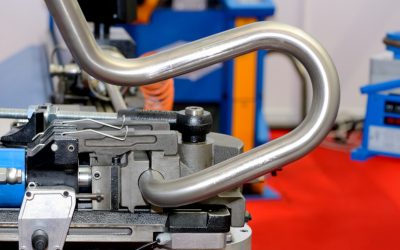Are you curious about the benefits and drawbacks of PVDF coatings and how they compare to other aluminum finishing options? Perhaps you need more details about how they’re applied, or maybe you want to know how they compare to powder coating.
In this article, we discuss PVDF coatings — and they’re worth considering for many reasons — including their ability to make aluminum products both visually appealing and long-lasting. Even under harsh conditions such as exposure to saltwater spray, they stand up to weathering better than other alternatives.
We’ll start by explaining what PVDF coatings are, then talk about their application process, benefits, and how they differ from powder coat.
Table of Contents
What are PVDF Coatings?
Polyvinylidene fluoride (PVDF) coatings are a factory-applied, resin-based coating system, typically with embedded color pigment particles that support a wide range of matte-finish colors. They are most commonly used for architectural coating applications due to their superior resistance to weathering by sunlight, moisture, or temperature.
Aluminum wall cladding, curtain wall, and roofing sheet are some of the most common applications for PVDF coatings.
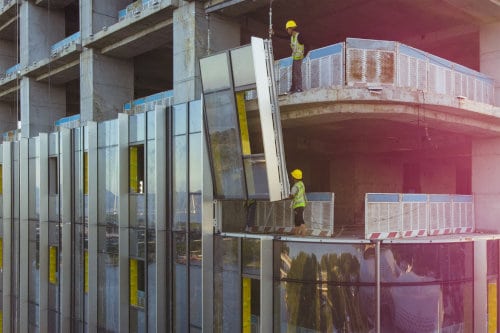
Aluminum curtain wall being installed
PVDF coatings fit among the fluorocarbon family of plastics, which form bonds that are extremely chemically and thermally stable. This enables some PVDF coating variants to consistently meet or surpass stringent requirements (like AAMA 2605) with minimal fading over long periods of time. You may be wondering how these coatings are applied.
The PVDF Application Process
PVDF coatings for aluminum are applied in a painting booth by a liquid spray coating gun. The following steps outline the full process for completing a high-quality PVDF coating:
- Surface Preparation – Any high-quality coating requires good surface preparation. Good PVDF coating adhesion requires cleaning, degreasing, and deoxidizing (removing rust) the aluminum surface. Superior PVDF coatings then require the application of a chrome-based conversion coating to be applied before the primer.
- Primer – The primer effectively stabilizes and protects the metal surface while improving adhesion for the top coating.
- PVDF Top Coating – Color pigment particles are added along with the application of the top coating. The top coating serves to provide the coating with resistance to damage from sunlight and water, as well as an increase in abrasion resistance. The coating must be cured after this step. The top coating is the thickest layer in the PVDF coating system.
- PVDF Clear Coating – In the 3-layer PVDF coating process, the final layer is the clear coating, which provides additional protection from the environment and allows the color of the topcoat through without exposing it to damage. This coating layer must also be cured.
If required for certain applications, a 2-coat or 4-coat process can be used instead of the 3-coat method described above.
Key Benefits of Using PVDF Coatings
- More environmentally friendly than dip coatings, which contain volatile organic compounds (VOCs)
- Resistant to sunlight
- Resistant to corrosion and chalking
- Resistant to wear and abrasion
- Maintains a high color consistency (resists fading)
- High resistance to chemicals and pollution
- Long-lasting with minimal maintenance
Comparing PVDF and Powder Coatings
The primary differences between PVDF coatings and powder coatings are that PVDF coatings:
- Use a modulated fluid paint, whereas powder coatings use electrostatically applied powders
- Are thinner than powder coatings
- Can potentially be cured at room temperature, while powder coatings must be baked
- Are resistant to sunlight (UV radiation), while powder coatings will fade over time if exposed
- Can only have a matte finish, whereas powder coatings can come in a full range of colors and finishes
- Are more costly than powder coatings, which are cheaper and can save additional cost by reusing over-sprayed powder
Should I Coat Architectural Aluminum With PVDF?
It may depend on your exact applications but if you want highly durable, environmentally resistant, and long-lasting extruded or rolled aluminum products, PVDF coatings may be right for you.
For lower-cost interior coatings with an even wider range of vibrant colors than PVDF coatings, check out our article on powder coating.
For custom architectural extrusions (e.g. curtain wall) visit our custom aluminum extrusions page. And for custom aluminum sheet (e.g. wall cladding) visit our rolled aluminum page.

